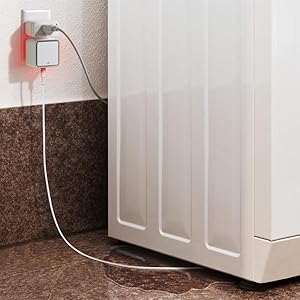معلومات عنا
حقوق الطبع والنشر © 2024 Desertcart Holdings Limited
Desert Online General Trading LLC
Dubai, United Arab Emirates








💧 Stay dry, stay smart — protect your home with Eve Water Guard!
Eve Water Guard is a smart water leak detector featuring a 6.5 ft sensing cable extendable up to 490 ft, a powerful 100 dB siren, and seamless integration with Apple HomeKit via Bluetooth and Thread. It provides instant multi-channel alerts on your Apple devices, enhances your smart home network as a Thread router node, and prioritizes privacy with local data processing and no cloud dependency. Designed for easy setup without a bridge, it offers reliable, large-area water leak detection to prevent costly damage in bathrooms, basements, and utility rooms.








| Voltage | 120 Volts |
| Control Method | App, Touch |
| Noise Level | 100 Decibels |
| Mounting Type | Tabletop Mount |
| Maximum Range | 150 Meters |
| Sensor Technology | Contact Sensor |
| UPC | 813180020894 |
| Manufacturer | Eve Systems LLC |
| Part Number | 20EBZ8701 |
| Item Weight | 3.9 ounces |
| Product Dimensions | 2.6 x 2.6 x 1.8 inches |
| Item model number | 20EBZ8701 |
| Style | Eve Water Guard |
| Item Package Quantity | 1 |
| Included Components | Eve Water Guard, Interchangeable plug adapters (EU, UK, US, AU), 200 cm / 6.5 ft sensor cable, Quick Start Guide |
| Batteries Included? | No |
| Batteries Required? | No |
| Warranty Description | 1 Year |
ترست بايلوت
منذ 3 أسابيع
منذ يومين